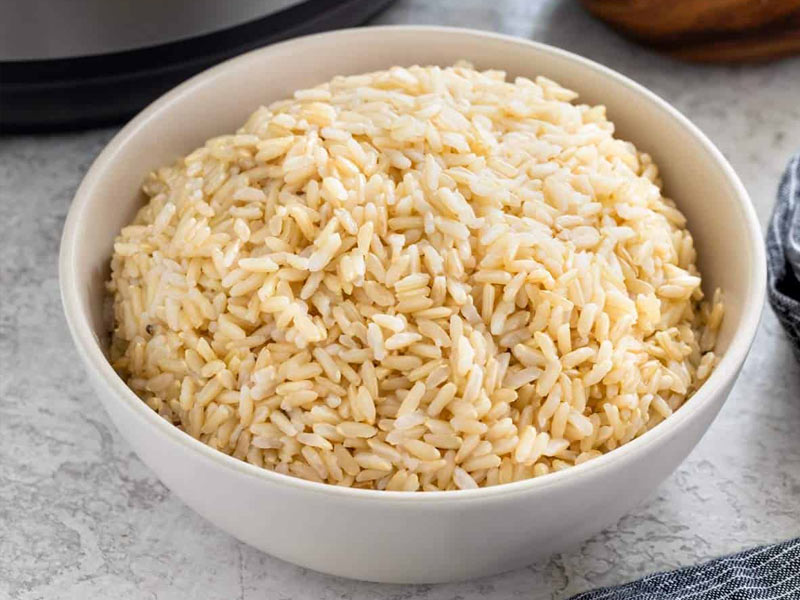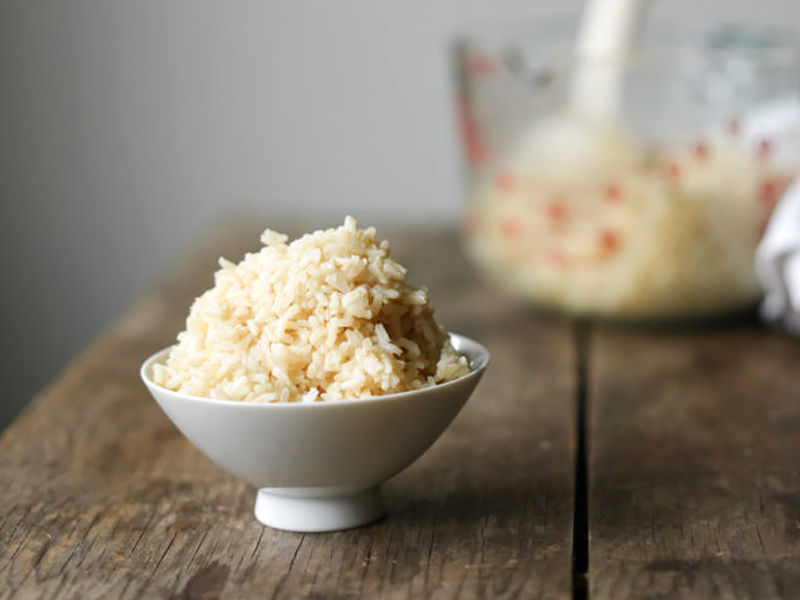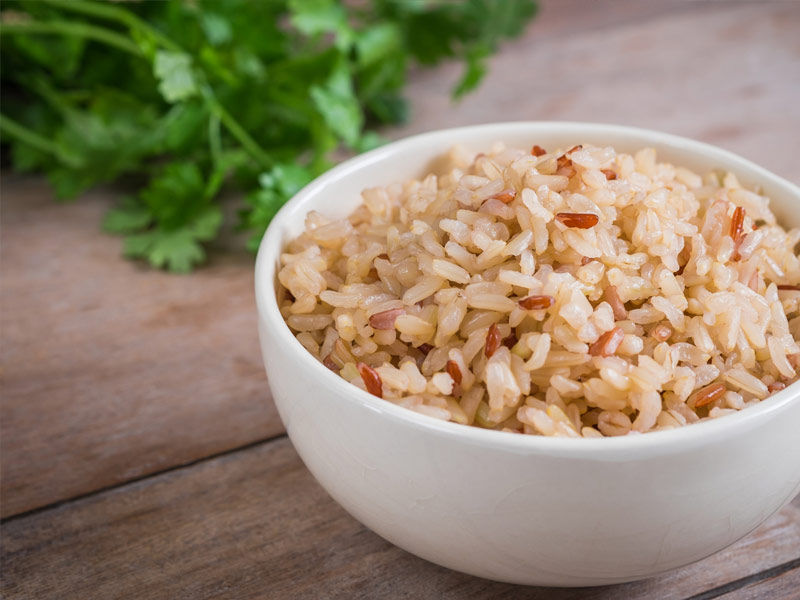Brown rice is a food that is frequently connected with healthy eating. Brown rice, which is considered a whole grain, is less processed than white rice, which has had its hull, bran, and germ removed. Brown rice is stripped of its hull (a hard protective coating), leaving just the nutrient-dense bran and germ. As a result, brown rice preserves vitamins, minerals, and antioxidants that white rice lacks. However, due to the growing popularity of low-carb diets, many people avoid brown rice.
What exactly is brown rice?
Brown rice is a dehusked and unpolished rice made by removing the outer shell of the rice kernel, known as the hull. This method aids in the preservation of brown rice’s nutritional content. It is chewier than white rice and has a nutty flavor.

Scroll down to know more about the Benefits of Brown Rice
1. Diabetes risk is reduced.
Brown rice has a low glycemic index (GI), which means it does not induce a surge in blood sugar after eating. According to studies, consuming three servings of healthy grains each day, such as brown rice, can reduce your chance of getting type 2 diabetes by up to 32%.
On the other hand, white rice has been linked to an increase in the risk of diabetes. Another study discovered that persons who consume a lot of white rice are around 17% more likely to acquire diabetes than those who consume less. Scientists predict that changing around 50 grams of white rice per day with brown rice can cut diabetes risk by 16 percent.
2. Heart health is Improved
Many of the nutrients in brown rice are beneficial to your heart. It’s high in dietary fiber, which can lower your chance of dying from heart disease. Brown rice is also abundant in magnesium, which can help reduce your risk of heart disease and stroke. Overall, studies show that eating more whole grains, especially brown rice, can cut your risk of heart disease by up to 22% and your risk of stroke by up to 12%.

3. Improved Weight Control
By 2020, four out of every ten Americans will be obese, with one out of every ten being extremely obese. Including brown rice as a dietary staple may assist people who are overweight to lose more weight and lower their body mass index, which is a common indicator of healthy or unhealthy weight.
In addition, brown rice has higher dietary fiber than white rice. Higher-fiber foods keep you satiated for longer while consuming fewer calories. If you substitute brown rice for white rice, you will be able to eat less without feeling hungrier.
Also Read, Lesser Known Benefits of Black Salt, you Must Know
4. It aids digestion.
Brown rice is a useful staple that may be simply introduced to the daily diet to improve digestion. Brown rice contains fibers that help to control digestive movements and keep your bowel movements regular. They have remarkable benefits in the treatment of colitis and constipation.
5. It regulates cholesterol levels.
It is a popular choice among many individuals due to its reduced cholesterol content. Brown rice oil has been shown to significantly lower levels of bad cholesterol (LDL cholesterol). Brown rice fiber binds to cholesterol in the digestive tract and aids in its elimination.

6. Anti-Oxidant-Rich
This is one of the best-kept brown rice secrets. Blueberries, strawberries, and other fruits and vegetables are commonly associated with anti-oxidant-rich foods. Its antioxidant capacity is on par with these all-stars.
7. Fiber-dense
It contains a lot of fiber and is at the top of the list of foods that can help prevent colon cancer. This is due to the high levels of fiber found naturally in brown rice. These fibers bind to cancer-causing compounds and poisons in the body, removing them and preventing them from sticking to the colon wall.
8. A Sugar with a Slow Release
Brown rice helps to normalize blood sugar levels, making it a good food choice for diabetics. According to studies, persons who take one-half cup of oatmeal daily reduce their chance of acquiring diabetes by 60%. Those who consume white rice daily, on the other hand, raise their risk of acquiring diabetes one hundredfold.
9. Effective neuroprotection
Brown rice lowers the risk of cognitive impairment and neurodegenerative diseases. They are high in fiber, which lowers cholesterol levels, which increases the risk of neurological illnesses. This rice can help reduce cholesterol by substituting it with healthier nutrients like fiber. It is also useful in the treatment of disorders such as Parkinson’s and Alzheimer’s. They also aid in the treatment of depression, anxiety, and stress.
10. Enhances maternal health
Brown rice is extremely beneficial in the treatment of postpartum depression. Consumption of this rice improved disturbed mood, phases of depression, and exhaustion in nursing moms.

Also Read, Fennel Seeds – The Nutritious Mouth Fresheners
Nutrition pe serving of 100 grams
Nutrients |
Value |
| Water [g] | 70.27g |
| Energy | 123 |
| Energy [kJ] | 514kJ |
| Protein [g] | 2.74g |
| Total lipid (fat) [g] | 0.97g |
| Ash [g] | 0.44g |
| Carbohydrate, by difference [g] | 25.58 |
| Fiber, total dietary [g] | 1.6g |
| Sugars, total including NLEA [g] | 0.24g |
| Sucrose [g] | 0.24g |
| Starch [g] | 24.79g |
| Calcium, Ca [mg] | 3mg |
| Iron, Fe [mg] | 0.56mg |

























